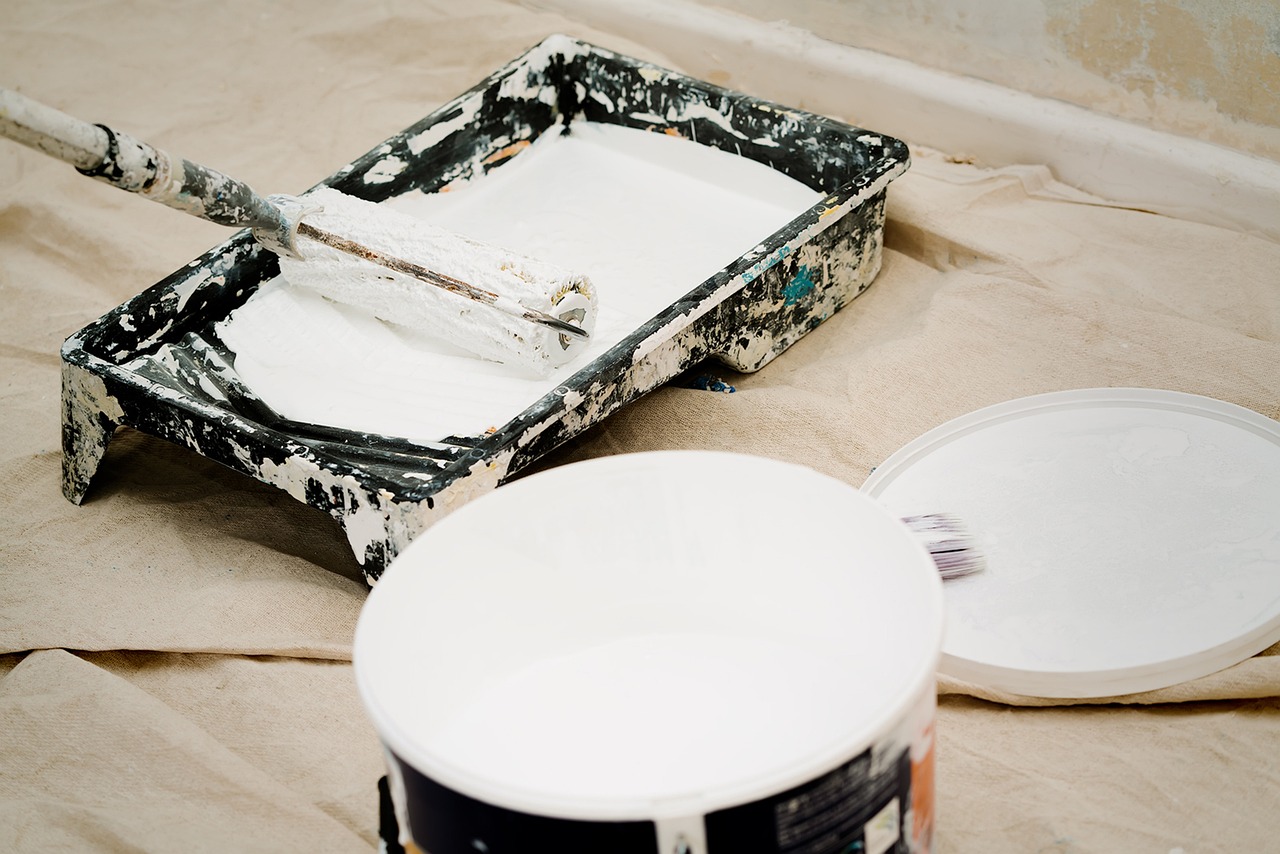Creating a greener home starts with the choices we make, and one impactful decision is adopting sustainable painting practices. From choosing eco-friendly paints to utilizing environmentally conscious painting tools and materials, every step matters. It’s not just about reducing our carbon footprint – it’s about ensuring healthier living environments and promoting sustainability.
This article will guide you through essential eco-friendly painting practices. Whether you’re looking to repaint a single room or your entire home, these tips will help you make environmentally sound decisions without compromising on quality or aesthetics. By prioritizing sustainability in your painting projects, you contribute to a healthier planet and a healthier home.
Eco-Friendly Paints: What to Look For and Why They Matter
Choosing eco-friendly paints is a pivotal step in making your home more sustainable. These paints differ significantly from traditional options, primarily due to their low or zero levels of volatile organic compounds (VOCs). VOCs are harmful chemicals that evaporate at room temperature, contributing to indoor air pollution and posing health risks, including respiratory issues and headaches. By opting for low-VOC or VOC-free paints, you ensure a healthier living environment for your family while also reducing your environmental impact.
In addition to low-VOC content, look for paints with non-toxic formulations. These paints avoid harmful chemicals like lead, mercury, and formaldehyde, making them safer for both humans and pets. Many eco-friendly paints also use natural pigments extracted from minerals and plants, which are less harmful to produce and decompose more readily. Another factor to consider is the paint’s packaging. Prioritize brands that use recycled or biodegradable materials for their containers, as this reduces plastic waste and promotes recycling efforts.
Environmentally Conscious Painting Tools and Materials
Sustainable painting extends beyond just the paints you use. The tools and materials chosen play a significant role in minimizing your project’s environmental footprint. High-quality, reusable supplies like paint brushes, rollers, and trays not only provide better results but also reduce waste. Investing in durable tools means fewer single-use products end up in landfills.
Biodegradable drop cloths are another excellent choice for eco-conscious painters. Instead of using plastic sheeting, opt for drop cloths made from natural or recycled materials like cotton or paper. These can break down more easily and are often sourced from renewable materials. When it comes to paint storage, use airtight containers to preserve leftover paint for future touch-ups or other projects. Donating unused paint to local organizations or recycling programs can also prevent unnecessary waste and support community initiatives.
By considering these sustainable tools and materials, you can ensure that every aspect of your painting project aligns with your commitment to environmental responsibility.
Best Practices for Sustainable Painting Projects
To ensure your painting project is as sustainable as possible, it’s important to follow best practices throughout the process. Start with proper surface preparation. Clean walls thoroughly to remove dust, dirt, and grease, which ensures better paint adhesion and reduces the need for multiple coats. Patch any holes or cracks to create a smooth surface, which also minimizes the amount of paint needed.
Utilize natural light as much as possible while painting. This reduces the need for artificial lighting, saves energy, and provides a clearer view of the true colours you are working with. When artificial lighting is necessary, use energy-efficient LED bulbs. Choose weekdays for your painting projects to avoid peak energy consumption times, contributing to reduced overall energy demand.
Apply paint efficiently to avoid waste. Use a paintbrush or roller appropriate for the surface you are working with to ensure even coverage. Follow the manufacturer’s guidelines for drying times between coats, and avoid overloading brushes or rollers, which can result in drips and wasted paint.
Post-Painting Disposal and Clean-Up: Minimizing Your Environmental Impact
Once your painting project is complete, it’s vital to handle disposal and clean-up in an environmentally friendly manner. Properly storing leftover paint is crucial. Keep it in airtight containers to extend its shelf life for future use. Label the paint containers clearly with the date and colour for easy identification when needed.
Dispose of paint materials responsibly. Many communities offer paint recycling programs where you can drop off leftover paint. Alternatively, donate unused paint to local schools, community centres, or non-profits who can put it to good use.
Clean your painting tools with minimal water to avoid excess waste. Use a two-bucket system: one for soapy water and one for rinsing. Dispose of the soapy water as per local guidelines, avoiding storm drains which can harm the environment. For water-based paints, tools can be cleaned with eco-friendly solutions that break down paint residues safely.
Conclusion
Sustainable painting practices contribute to a healthier home and planet. By choosing eco-friendly paints, using environmentally conscious tools, adhering to best practices, and managing waste responsibly, we make a significant positive impact. The steps might seem small, but collectively, they lead to very noticeable results in both our daily lives and broader environmental efforts.
If you’re ready to embark on a sustainable painting project and need professional guidance, contact Xico Enterprises Inc. We are dedicated to providing exceptional painting services in Victoria, BC and craftsmanship to help you achieve your green goals.



